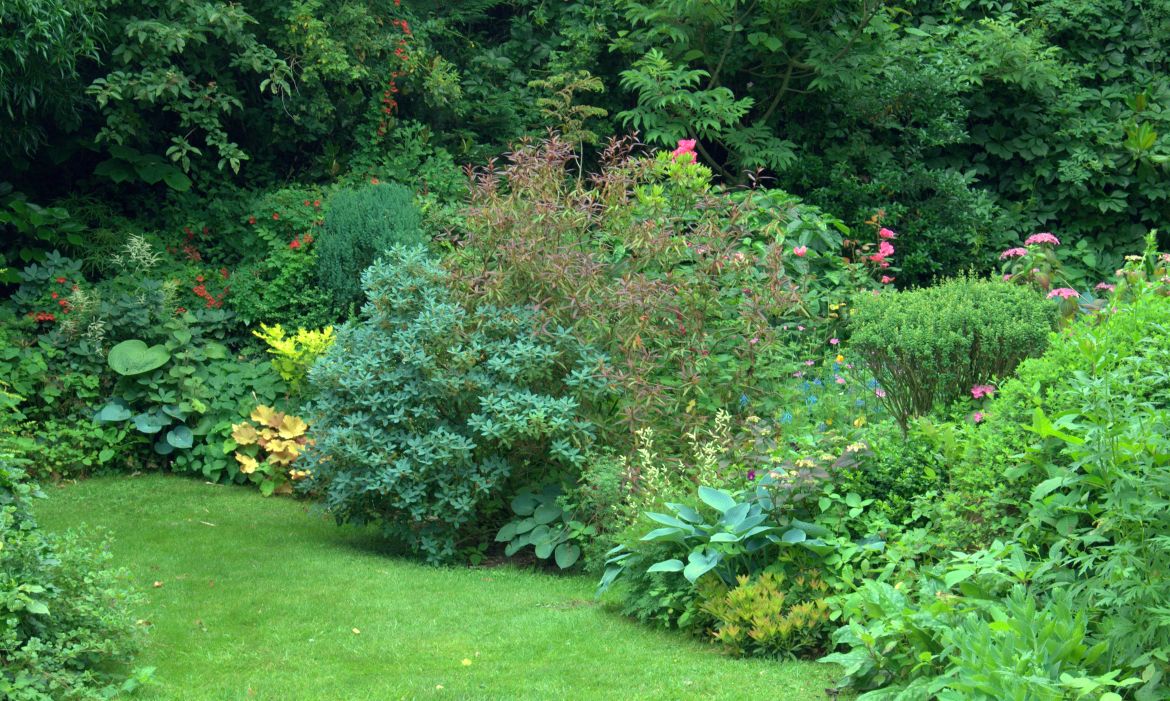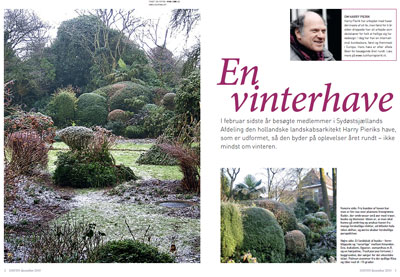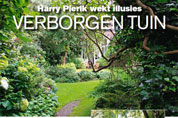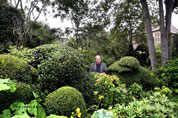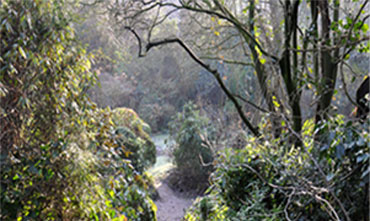Weblog
In short, Harry Pierik is one of the most interesting designers I've met – the emotional influence of his gardens is very powerful. His green designs are very complex, and there is no point in copying them.
Необыкновенные Бордюры Харри Пирика
| Октябрь 30, 2011 | Идеи Весенний Сад |
| Май 20, 2011 | Потаенный Городской Сад Харри Пирика |
| Июнь 12, 2011 | Ольга ван Саане or "Landing" by Olga van Saane. |
Translation:
A garden like this is a unique one. One would never guess it being hidden behind the door of a typical Dutch town-house on a busy street.
Push the door open, and all of a sudden a mirage-like green forest welcomes a visitor to a pleasing shade, to a play of sunlight on lush leaves, to the delicate blooms, to curvy paths disappearing in the depth of greens. One step in, and you “time-travel” far away from the city, to some farthest outdoors. Magical woodland, man-made on 1000 m2, in a Dutch place Zwolle, not far from where I live. Beautiful garden.
It all started in 1984, from a wasteland at the town-house back yard. Harry Pierik, Dutch landscape designer, cleaned the space and drew the first flowing outlines of his future garden. The natural lines form the design of the “Hidden Town Garden”, as it’s called now by local media. Its dynamics, depth, perfect balance of forms and colors, all-year interest, multiple levels (where each level is interesting without overpowering the whole composition) – these are the features of the garden one falls in love with, at the first sight. With all the natural feel around it, there is not a sign of abundance or wilderness sometimes mistakenly described as naturalistic woodland style. “Hidden Town Garden” is not an attempt to copy nature, but tasteful, clever and beautifully crafted contemporary garden, exposing nature at its best through all seasons.
I have to say the style of “contemporary woodland” fits perfectly our climate, with its rainy winters and cool summers. Planting of “Hidden Town Garden” includes local or well-inhabited plants, mostly perennials. Even the “tropical” plants are those feeling good in our region. All in all, the Hidden Garden is full with creative ideas worth looking into, with the thought of implementing them in your own plot. For example, tall growing shrubs Harry Pierik cuts to create a sky-line for his garden so that mounting “green hills” form a new landscape horizon. Reminded me of “Green Door” design of Ishihara I was writing in one of my previous posts. Well, I do recommend you to list through the gallery of “Hidden Garden” at Harry Pierik’s website and read the plant combinations and their description. Such garden visits, even virtual ones, are very inspirational and useful to do with a pencil and a block-note. I would be very surprised if you won’t note down at least a couple of combinations and to run finding them to plant in your garden, - so beautiful and inspiring “Hidden Garden” is. It inspires not only to gardening but to poems, too.
Een dag in mei.
Vogels mogen hier wonen.
Ik moet helaas gaan.
Thea Faber*
In my translation:
“One day in May. Birds may stay to live here. I have, alas, to leave.”
Btw don’t miss the opportunity to “walk “ through Harry Pierik’s garden when snowdrops are blooming…
..................................................
and another one to "Beautiful Borders of Hidden Garden":
As promised, I went to take some photographs of “Hidden Garden” borders. I haven’t seen many of borders like his, honestly. Dutch designer worked out his own, unique style, and the style fits “woodland garden” perfectly. Have a close look: more than 30 plants combined together on a small patch. All of them together, with no confrontation of damage to each other, inhabit different levels of a live green hill, or a green sculptural composition, better to say. Each one of them is in its place, seen at the best angle, featuring its own beauty and complimenting the beauty of neighboring plants.
Brilliant.
Taste and craft is at large in “Hidden Garden”, at a scale difficult to describe. One should see it with her own eyes and feel it, employing all senses: some unspeakable magic beyond any words inhabits this garden, where every plant lives its own natural life, as if the designer let everyone in – every flower, every bush, every tree – gave each the best place to grow and said: “Live and multiply!”
One of the main features of Pierik’s borders is the design with green forms – combining various shapes of leaves, structures of tree trunks, textures of bark – where flowers play secondary, seasonal role, adding to overall effect and creating different focal points in different seasons.
I’ve placed a small photo reportage of my visit to Harry Pierik’s place worth seeing. It’s truly inspiring: to someone – by lush greens of his “Hidden Town Garden”, to another one –by delicate medieval color palette of his new flower borders at a local abbey. Someone will aspire by small front garden of a nearby villa, where planting so clever and beautifully merges with a landscape (neighboring trees, the walls of the building, the path-works).
In short, Harry Pierik is one of the most interesting designers I’ve met – the emotional influence of his gardens is very powerful. His green designs are very complex, and there is no point in copying them, while there is a bigger point in starting to think and develop your own ideas, starting to implement them, however controversial they might be, with no fear, starting to feeling garden like Harry Pierik does.

